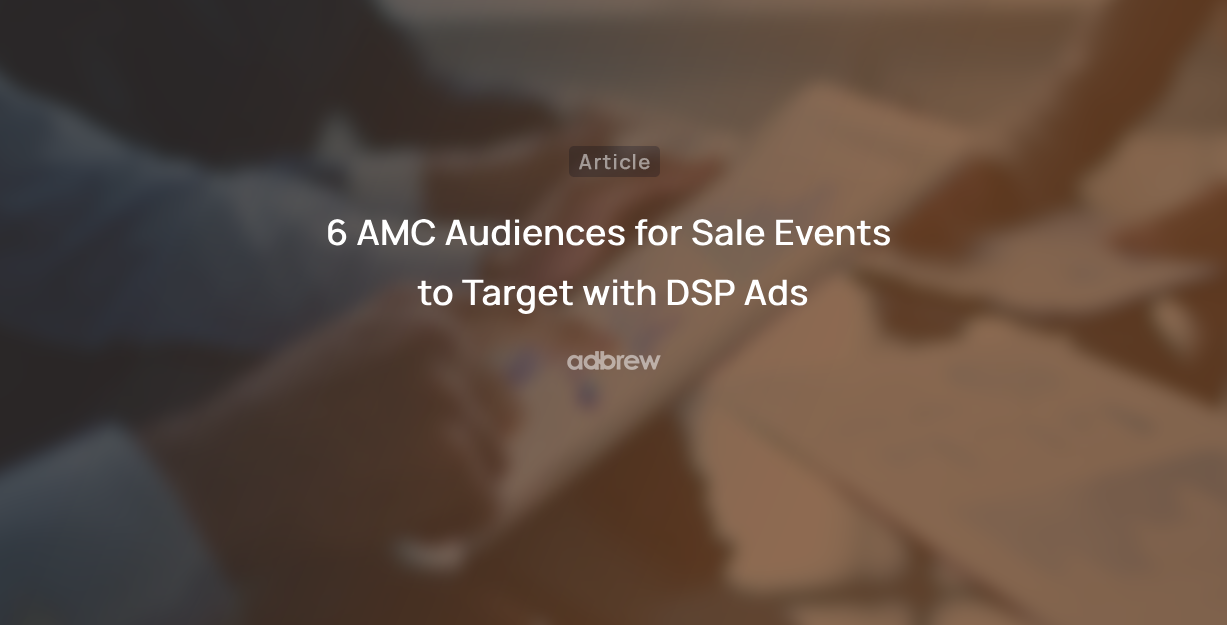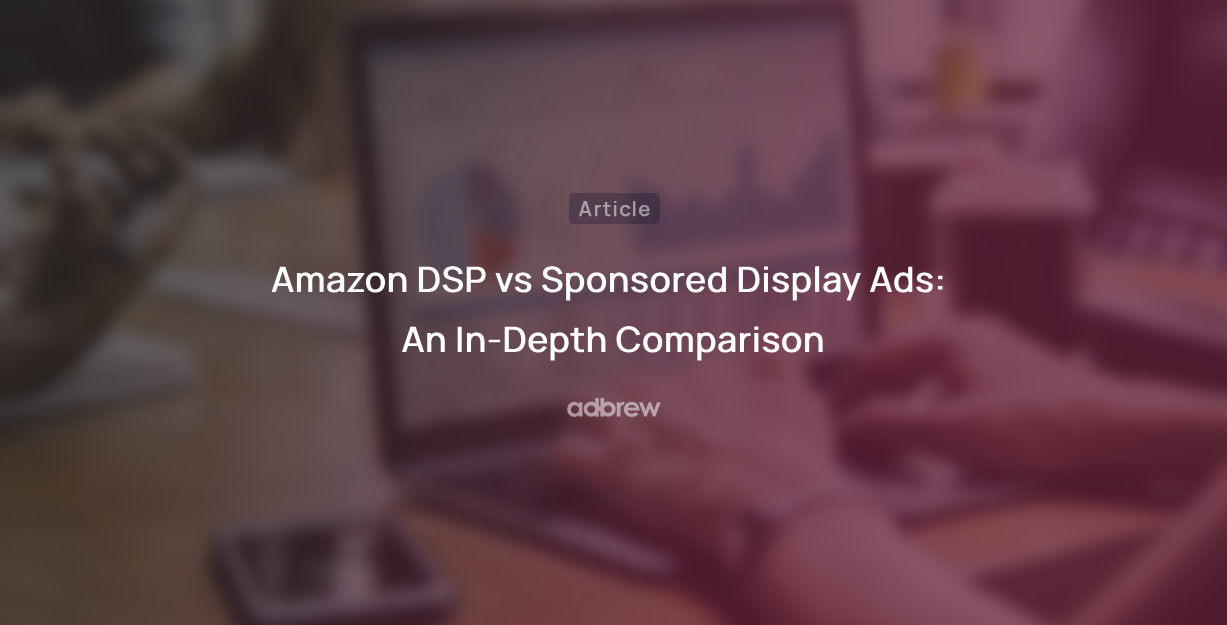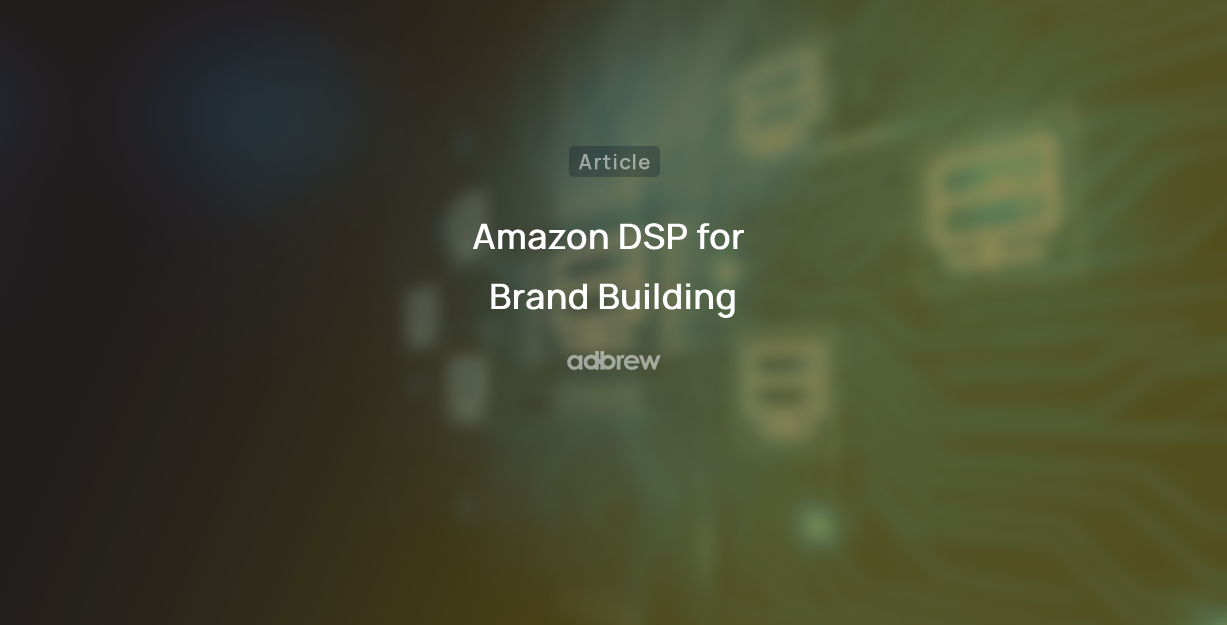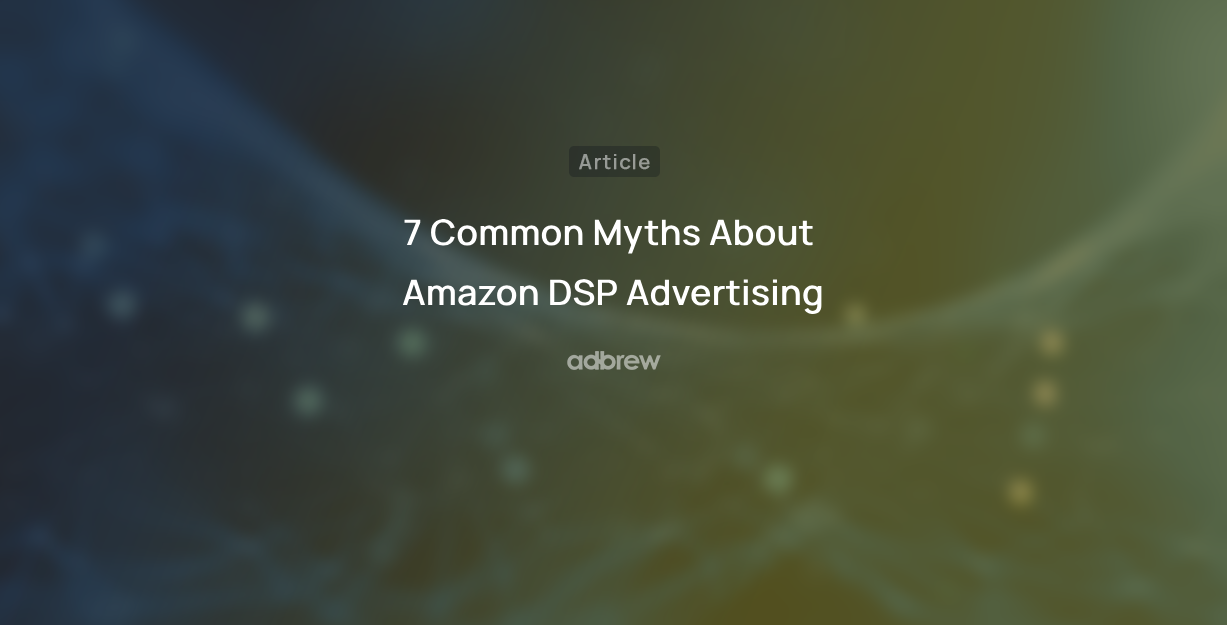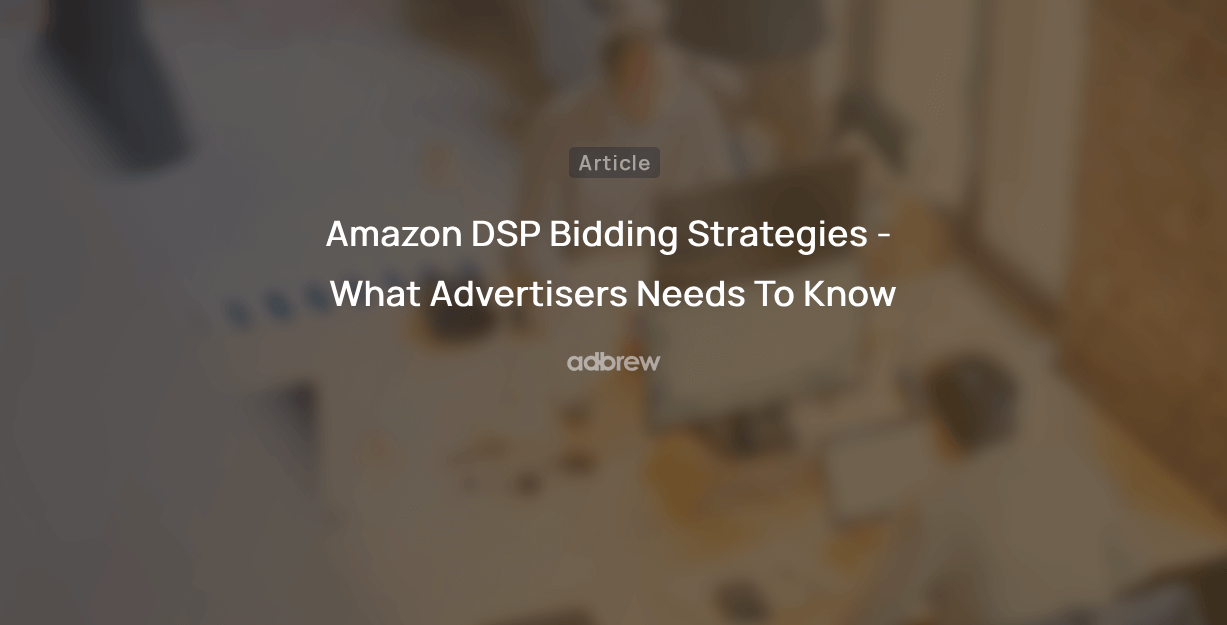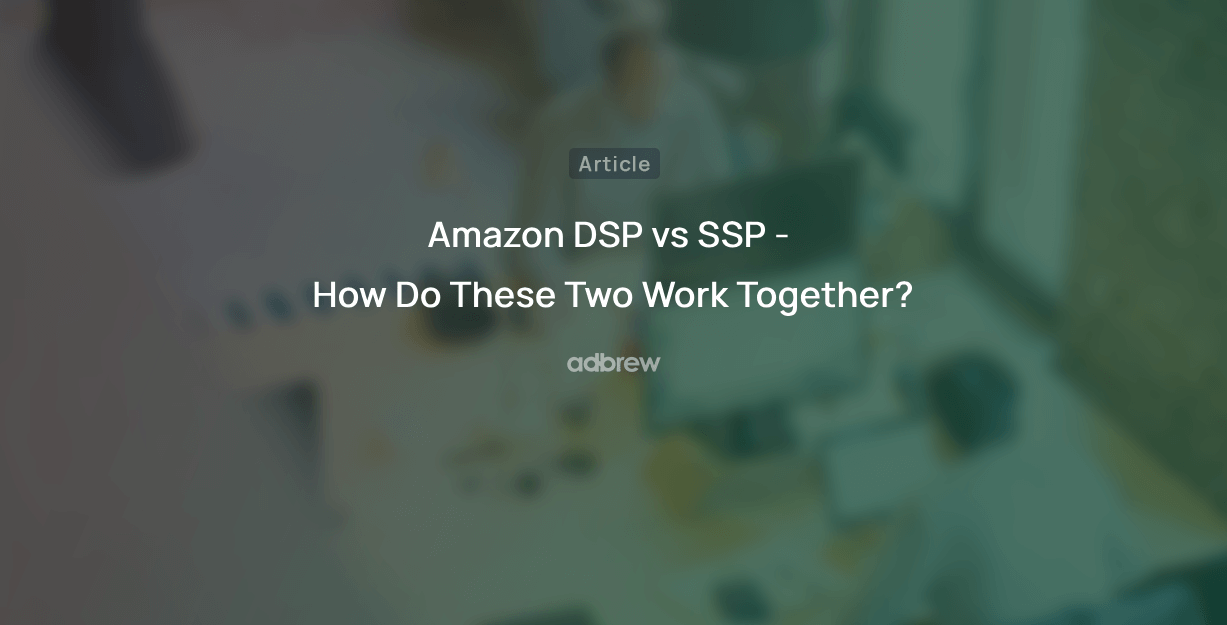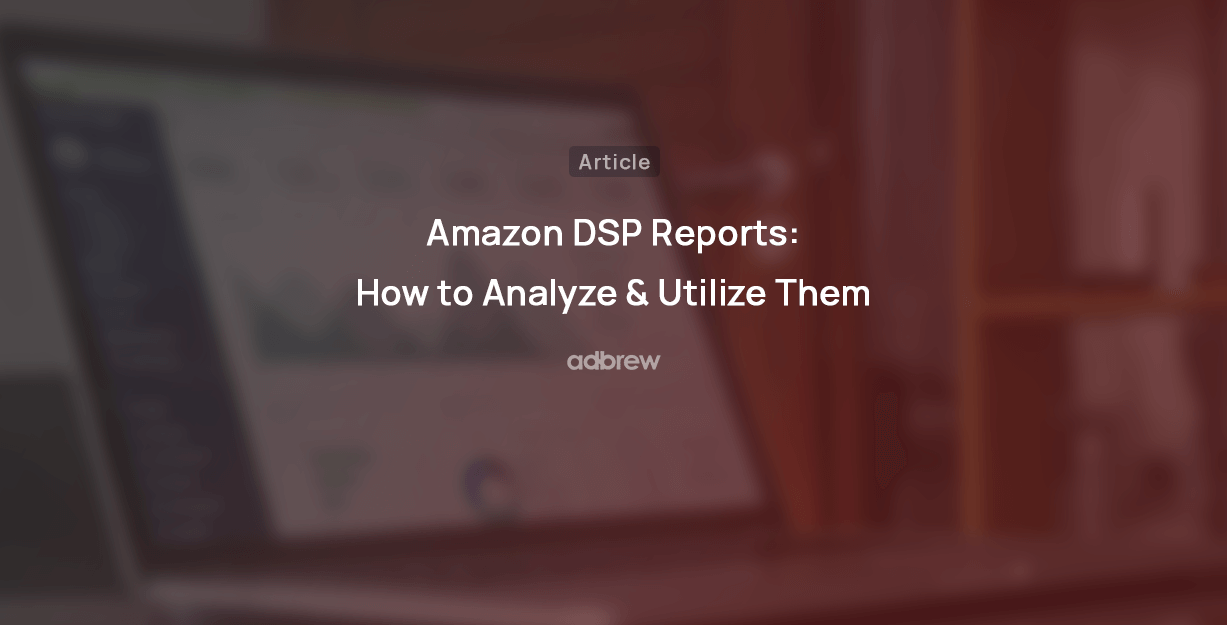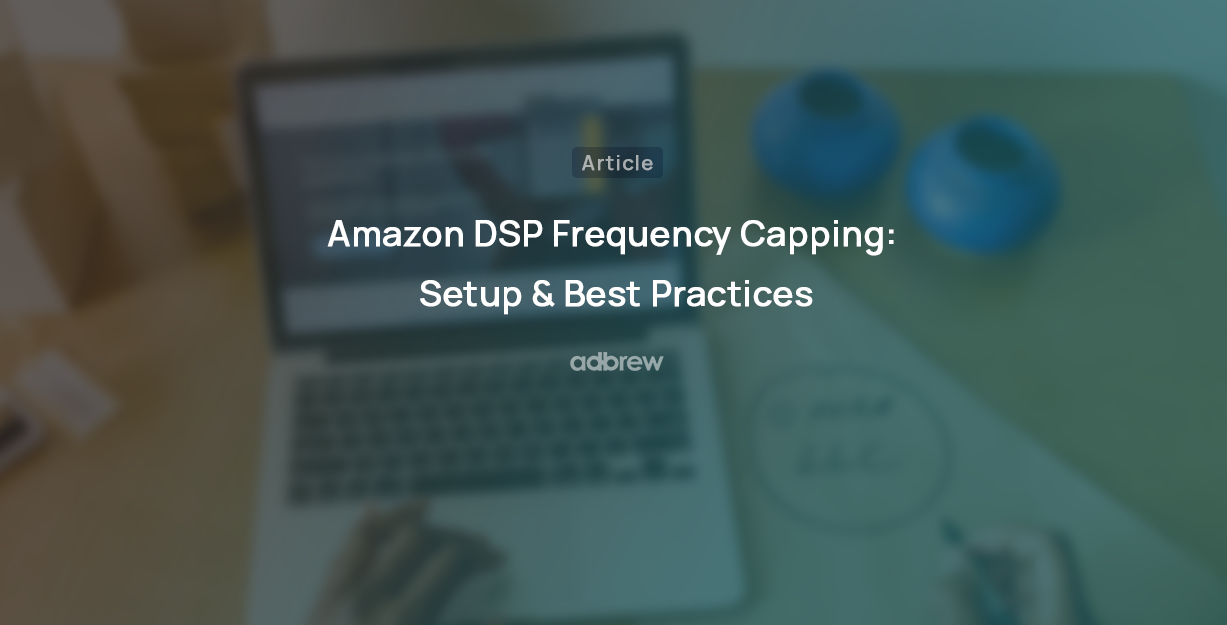
Amazon DSP, a Demand-Side Platform, allows advertisers to target audiences accurately using Amazon’s extensive shopper data. But before starting a campaign, it is essential to define your goals.
In this blog, we will explore the various campaign goals available in Amazon DSP, explain why setting goals is important, and provide guidance on selecting the right goal for your campaign.
What are the Different Types of Goals Present for Amazon DSP Campaigns?
Amazon DSP provides a variety of campaign goal options to meet different brand objectives:
1. Brand Awareness
This goal prioritizes increasing visibility for your brand or product. Imagine introducing yourself to a vast audience for the first time.
Success is measured by metrics such as impressions (the number of times your ad is displayed) and reach (the number of unique users who saw your ad). Brand awareness campaigns aim to build familiarity and brand recognition, laying the groundwork for future consideration and conversion.
2. Consideration
Here, the objective shifts towards driving interest and encouraging potential customers to learn more about your offering. Think of this as sparking a conversation.
Consideration campaigns might direct users to your brand website, specific product listings on Amazon, or informative landing pages so they can learn more about your offering. In this stage, metrics like detail page view (DPV) rate, video completion rate, add-to-cart/add-to-wishlist rate, etc. help us understand if people are considering your products.
3. Conversion
This goal focuses on increasing sales or encouraging users to take a specific action.
During the conversion stage, you need to convert this audience by creating campaigns specifically tailored for them. You can utilize Amazon Marketing Cloud Custom audience builder to create specific custom audiences based on different criteria like DPV rate, video completion rate, and add-to-cart/add-to-wishlist rate. This would help in targeting and converting the audiences with a higher chance of conversion. You can utilize Amazon DSP remarketing capabilities as well to target people who have shown interest in your products.
For Amazon DSP, conversions can include product purchases, sign-ups for a free trial, or app downloads. The key metric is conversion rate. The conversion rate shows the percentage of users who completed the desired action after viewing your ad.
Why is it Necessary to Decide the Goals of Your Campaigns?
Defining your campaign goals serves as the foundation for your entire Amazon DSP strategy. Here’s why it’s crucial:
Focus and Direction
Clear goals provide a roadmap for your campaign. They dictate the creative elements you use, the audience segments you target, and the bidding strategies you use. Without a defined goal, your campaign might lack direction and struggle to achieve meaningful results.
Targeted Audience Selection
Different goals necessitate targeting distinct audience segments. For brand awareness, you might aim for a broader reach, encompassing users with a general interest in your product category. On the other hand, consideration campaigns might benefit from targeting users who have previously demonstrated purchase intent through their browsing behavior or search history.
Optimized Bidding Strategies
Bidding strategies in Amazon DSP revolve around achieving your desired outcome. If brand awareness is your goal, you might prioritize maximizing impressions to reach as many users as possible. Conversely, conversion-focused campaigns might utilize cost-efficient bidding strategies that prioritize qualified clicks or conversions.
Measurable Success
Campaign goals provide a benchmark for measuring success. By aligning your chosen metrics with your goals, you can assess the effectiveness of your campaign. For instance, a brand awareness campaign might track impressions and reach, while a conversion campaign would analyze metrics like conversion rate and CPA.
How to Decide Which Campaign Goal to Choose?
The choice of campaign goal hinges on several factors:
Marketing Objectives
Consider your overall marketing objectives. Are you launching a new product and aiming for brand recognition? Are you looking to drive sales for an existing product or service? Understanding your broader marketing goals will direct you toward the most suitable campaign goal for your Amazon DSP campaign.
Stage in the Customer Journey
Think about where your target audience is positioned within the customer journey. Are they just becoming aware of your brand, or are they actively considering purchasing a product? Matching your campaign goal to the specific customer stage will optimize your efforts for better results.
Campaign Budget
Budget limitations can influence your goal selection. Brand awareness campaigns typically require a broader reach, potentially leading to higher costs. Conversely, conversion-focused campaigns might target a more specific audience, potentially lowering overall costs.
What are the Next Steps After Deciding the Goals for Your DSP Campaign?
Once you’ve established your campaign goals, here’s how to proceed:
Target Audience
Refine your target audience based on your chosen goal. Leverage Amazon DSP’s audience insights and targeting options to reach the most relevant users.
Creative Development
Craft compelling ad creatives that resonate with your target audience and align with your goals. For brand awareness, prioritize visuals that capture attention and establish brand identity. Consideration-focused creatives might highlight product features or benefits, consideration-focused creatives might highlight product features or benefits, while conversion-oriented creatives should emphasize the value proposition and encourage a clear call to action (CTA).
Campaign Optimization
Don’t set your campaign and forget it! Amazon DSP offers robust reporting tools that allow you to monitor performance and optimize your campaign in real time. Analyze metrics aligned with your goals and adjust elements like targeting, bidding strategies, and creatives based on the insights you glean.
Ready to get started with Adbrew?
Use Adbrew's AMC dashboard to view new-to-brand metrics for all your sponsored and DSP campaigns with ease.
Conclusion
Defining clear campaign goals in Amazon DSP is essential for success. By understanding the available goal options and the importance of goal setting, you can create targeted campaigns that effectively reach your audience and deliver measurable results. Treat your campaign as an ongoing process and use optimization techniques to maximize your return on ad spend (ROAS) and achieve your advertising objectives.
Recent Posts
Amazon DSP Ads Optimization Software

Related Blogs
With the advent of Amazon Marketing Cloud (AMC), optimizing ad campaigns has become more versatile than ever. One notable feature […]
Amazon DSP, a Demand-Side Platform, allows advertisers to target audiences accurately using Amazon’s extensive shopper data. But before starting a […]
Amazon’s Demand-Side Platform (DSP) has become a game-changer for advertisers seeking to reach a massive audience of engaged shoppers. However, […]
Having spent considerable time working with Amazon DSP ads, we’ve observed a common challenge: achieving and measuring optimal results from […]
Are you a non-Amazon seller looking to tap into the power of Amazon’s advertising network? Amazon DSP, their Demand-Side Platform, […]
Sale events are all about reaching the right customers at the right time. But with so many promotions bombarding shoppers, […]
Amazon offers two different display advertising options for sellers: Sponsored Display ads and Amazon DSP ads. Selecting the right one […]
In today’s digital world, building a strong online brand is crucial for businesses of all sizes. While Amazon advertising solutions […]
Amazon Demand Side Platform unlocks programmatic advertising across many channels in the vast Amazon ecosystem and beyond, but often gets […]
Feeling trapped in the challenges of Amazon Sponsored Ads? Limited to engaging only with customers actively searching for your brand […]
If you are selling on Amazon, having a well-crafted remarketing strategy in place becomes crucial. Imagine re-engaging with potential customers […]
In digital advertising, Amazon DSP has emerged as a powerful tool for businesses to connect with their target audience and […]
Unlike Sponsored Ads, Amazon DSP offers the flexibility to run campaigns that guide users to either Amazon or non-Amazon destinations. […]
Whether you’re an advertiser seeking to connect with engaged shoppers worldwide or a publisher looking to monetize your ad inventory […]
Are you just starting with Amazon DSP (demand side platform) and feeling a bit lost in how to create Amazon DSP campaigns? We […]
Are you an e-commerce business owner looking for new and interesting methods to reach out to potential customers? Look no […]
We all utilize many different DSP ad types and targeting options available to advertisers in Amazon DSP. But how do […]
Amazon DSP (demand side platform) provides a multitude of targeting options, ranging from customer demographics, and behavioral targeting to contextual […]
Every advertiser wants their ads to reach a broad audience. However, showing an ad too many times to one person […]
With more and more shoppers turning to Amazon for online shopping, it is obvious why brands don’t want to limit […]






